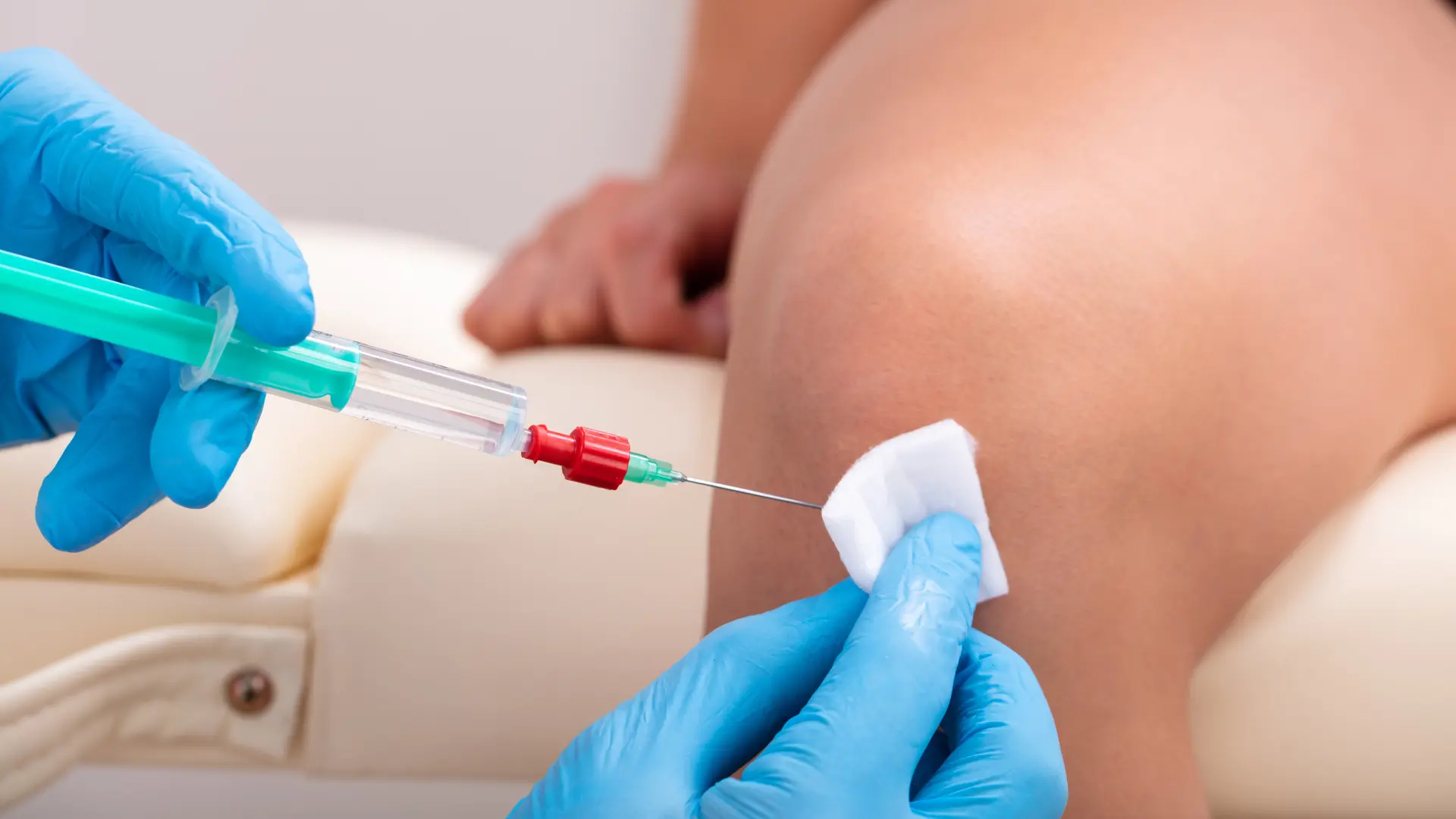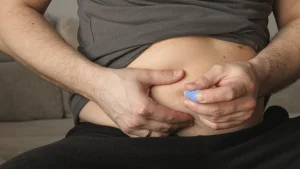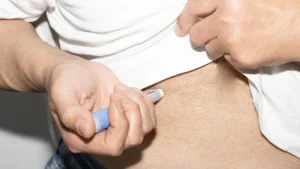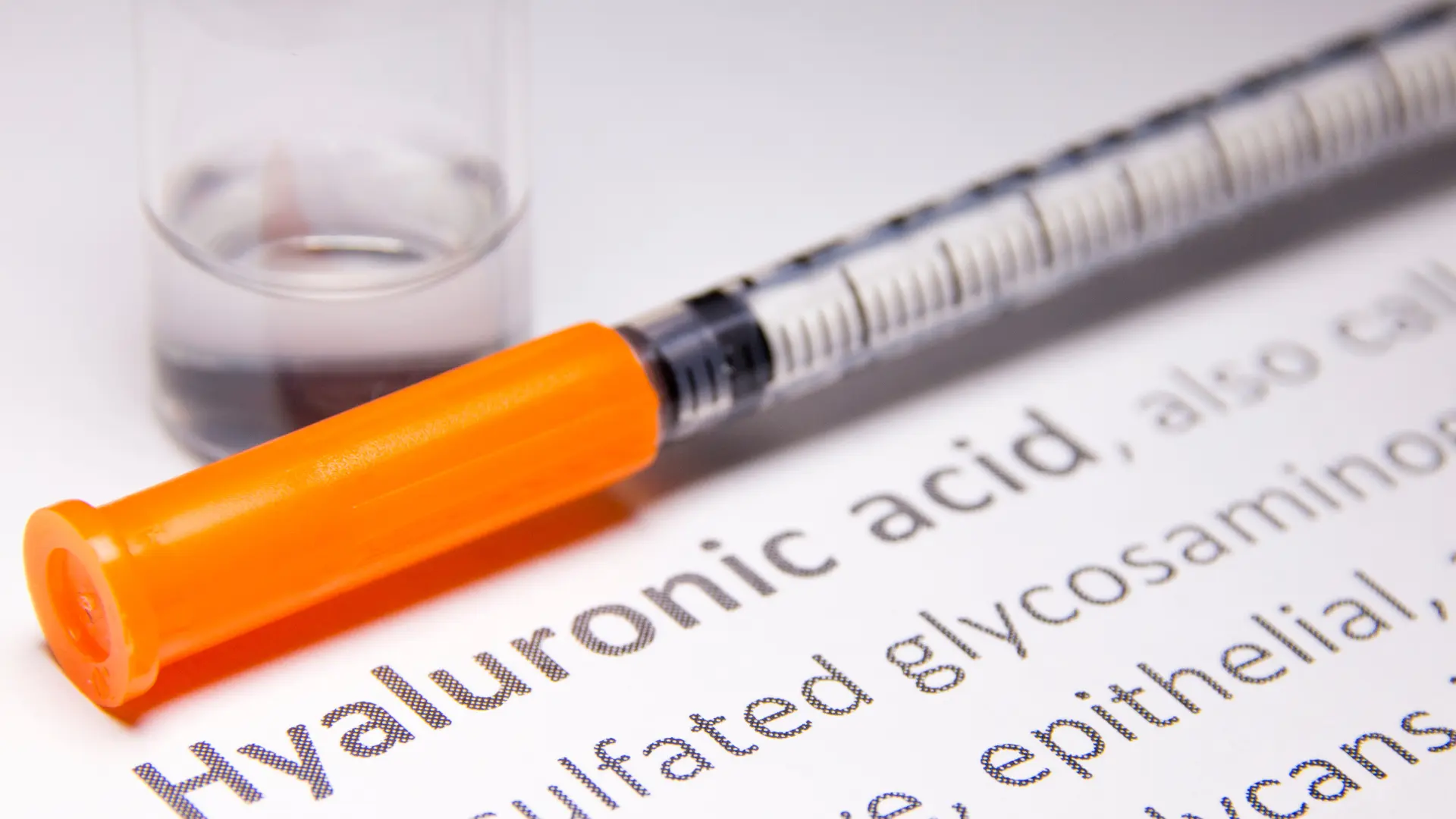Viscosupplementation, also known as hyaluronic acid (HA) injections, represents a widely used therapy for managing symptoms of knee osteoarthritis. Legré-Boyer (2015) highlights that these treatments operate straightforwardly, are generally well-tolerated by most patients, and appeal to its advantages.
Hyaluronic acid (HA) injections, commonly used for knee osteoarthritis, have evolved into single and multiple injection protocols. For individuals seeking a safe and efficacious approach to alleviating knee pain associated with osteoarthritis, healthcare providers may recommend injection therapies such as Durolane and Orthovisc. These treatments aim to mitigate symptoms and enhance joint function.
This article dives into the comparison of Durolane vs Orthovisc, their compositions, benefits, clinical efficacy, and treatment protocols.
Key Takeaways
- When injected into the affected knee joint, Durolane and Orthovisc provide lubrication, reduce inflammation, and improve joint function.
- While these viscosupplements have favorable safety profiles, patients must expect that potential Orthovisc or Durolane side effects may occur after treatment.
- Both treatments aim for sustained effects, with Orthovisc potentially requiring repeat cycles and Durolane’s repeat treatment after six months.
- Durolane and Orthovisc may offer cost-effectiveness over knee replacement or surgical interventions; seeking medical professionals’ advice and guidance can show the cost comparison between Durolane and Orthovisc.
About: Medica Depot is your trusted all-in-one supplier, offering a range of high-quality medical injectables and supplies. If you’re looking to order Durolane online, our dedicated sales agents can give you proper guidance. We offer a worry-free experience in searching for the best and most popular products on the market. Whether for health professionals, plastic surgeons, dermatologists, licensed estheticians, or other specialists, we can offer genuine, brand-name products you may need. With Medica Depot, we prioritize serving you better to improve the patient’s quality of life.
Understanding Durolane and Orthovisc
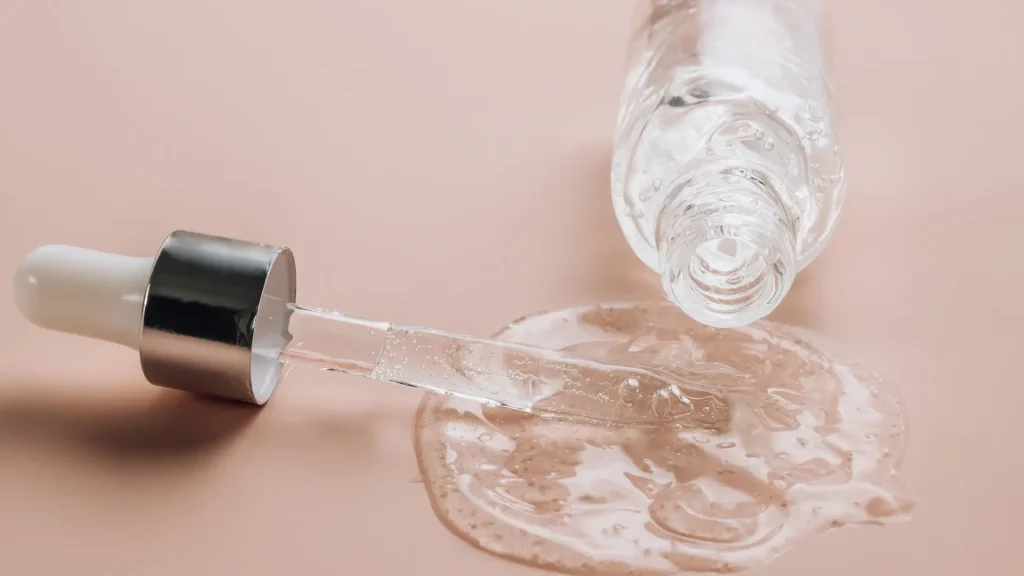
Hyaluronic acid injections have emerged as effective solutions to address the chronic symptoms caused by knee osteoarthritis (OA). Medical professionals may compare Durolane vs Orthovisc among many brands to determine the most suitable product for each patient’s preferences, concerns, and needs.
The Durolane ingredients include a high concentration of sodium hyaluronate and other components to stabilize the formulation. Unlike other viscosupplements, Durolane utilizes NASHA technology that closely resembles the natural hyaluronic acid in the synovial fluid and delivers longer-lasting results.
Meanwhile, Orthovisc also capitalizes on hyaluronic acid, specifically highly purified sodium hyaluronate (NaHA) in physiologic saline. This primary ingredient makes Orthovisc biocompatible and resorbable.
Despite their differences in formulation, Durolane and Orthovisc work similarly. When injected into the affected knee joint, they provide lubrication, reduce inflammation, and improve joint function. They can deliver the following benefits for patients with knee OA symptoms.
- Symptomatic Relief
- Minimally Invasive and Quick Procedure
- Cost-Effective Alternatives
- Long-Lasting Results
- Improved Quality of Life
Clinical Efficacy and Safety Profiles
In a clinical comparison, a single injection of Durolane was found to be equally effective as five injections of 2.5 mL viscosupplement over 18 and 26 weeks. Both treatments effectively reduced pain, improved physical function, and received positive global self-assessment. Additionally, they were well-tolerated and safe.
On the other hand, the results of a controlled multicenter trial suggest that high molecular weight hyaluronan or Orthovisc is both safe and effective for treating mild to severe knee osteoarthritis. 76% of the three-injection regimen patients had a more significant than equal 20% improvement in pain score than the control group’s 62%.
While these viscosupplements have favorable safety profiles, patients must expect that potential Orthovisc or Durolane side effects may occur after treatment. These are typically temporary and may resolve within a few days. However, when they persist, patients must seek immediate medical attention.
- Durolane Side Effects: Transient pain, swelling, and stiffness localized to the joint.
- Orthovisc Side Effects: Local injection site adverse events such as pain, discomfort, swelling, inflammation, redness, skin irritation, joint effusion, or fluid build-up.
Moreover, medical professionals must also avoid the contraindications of Durolane and Orthovisc to prevent further complications that may risk patient’s safety and health.
- Durolane Contraindications: Avoid injecting Durolane to patients with hypersensitivity to hyaluronic acid or other Durolane ingredients, knee joint infections, infections, or skin disease in the area of the injection site.
- Orthovisc Contraindications: Do not administer to patients with known allergies to avian or avian-derived products (including eggs, feathers, or poultry), patients with known hypersensitivity to hyaluronate preparations, and knees of patients with infections or skin diseases in the area of the injection site or joint.
Adhering to these contraindications can ensure patient safety throughout the procedure. Furthermore, equipping patients with knowledge of the potential Orthovisc or Durolane side effects empowers them to make informed treatment decisions.
Treatment Protocols and Patient Satisfaction

A thorough consultation with a medical professional can help individuals understand the treatment procedure. These practitioners can equip patients with comprehensive information about Durolane or Orthovisc’s benefits, potential risks, and treatment protocols.
- Durolane: Treatment typically involves a single injection, making it convenient for patients.
- Orthovisc: This injection treatment requires a three-injection regimen spaced over several weeks.
Durolane’s single injection therapy provides immediate relief as early as a week or two, whereas Orthovisc’s three injections offer a gradual benefit. Both treatments aim for sustained effects, with Orthovisc potentially requiring repeat cycles and Durolane requiring repeat treatment after six months.
Regular follow-up assessments ensure treatment efficacy and address any ongoing symptoms. With their proven safety and effectiveness in clinical studies, Durolane and Orthovisc garnered high patient satisfaction due to their ability to bring symptomatic relief, increased mobility, and improved quality of life to knee osteoarthritis (OA) patients.
A cohort study highlights that 64.9% of respondents recommended hyaluronic acid injections for osteoarthritis. The study findings also revealed that individuals received pain relief from Durolane for an average of 466.8 days after the initial treatment. Meanwhile, Orthovisc received an average rating of 6.4 stars out of 10 on Drugs.com, highlighting the users’ satisfaction.
Cost and Duration of Relief
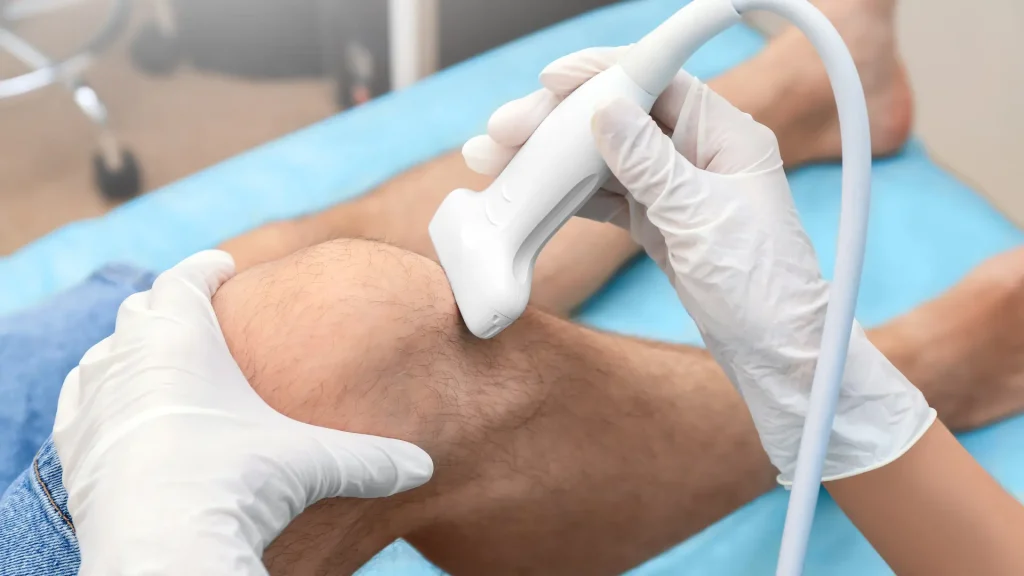
While both may offer cost-effectiveness over knee replacement or surgical interventions, seeking medical professionals’ advice and guidance can show the cost comparison between Durolane vs Orthovisc.
While Durolane involves a single injection, its cost may be higher upfront. However, patients experience immediate relief lasting up to six months. Orthovisc requires three injections, potentially spreading the cost over multiple sessions, and it has a similar relief duration to Durolane.
Patients should consider both efficacy and budget. Moreover, insurance coverage and healthcare provider preferences also impact the overall cost for each viscosupplement treatment.
Conclusion
Durolane and Orthovisc offer potent solutions for individuals seeking effective knee osteoarthritis (OA) treatments. Both options provide symptomatic relief, improved joint function, and enhanced quality of life, with Durolane standing out for its longer-lasting results due to NASHA technology.
Clinical studies highlight the efficacy and safety of both treatments, indicating their potential to alleviate knee OA symptoms. The comparison between Durolane vs Orthovisc underscores the importance of personalized care and tailored treatment plans to meet individual preferences, concerns, and needs in managing knee osteoarthritis.
FAQs
1. What are the key differences between Durolane and Orthovisc knee treatments?
Durolane and Orthovisc utilize different formulations of hyaluronic acid, with Durolane using NASHA technology and Orthovisc using highly purified sodium hyaluronate (NaHA). They both aim to provide symptomatic relief, improve joint function, and have similar benefits for patients with knee osteoarthritis.
2. What are the safety profiles and potential side effects of Durolane and Orthovisc?
Both Durolane and Orthovisc have favorable safety profiles. Potential side effects are transient and typically resolve within a few days. Durolane’s side effects may include transient pain, swelling, and stiffness localized to the joint. In contrast, Orthovisc’s side effects may consist of adverse events at the local injection site, such as pain, discomfort, swelling, and inflammation.
3. How do the treatment protocols for Durolane and Orthovisc differ, and what is the expected patient satisfaction for each?
Durolane involves a single injection treatment, providing immediate relief within a week or two, while Orthovisc requires a three-injection regimen spaced over several weeks. The treatment protocols and patient satisfaction depend on individual preferences, needs, and consultation with medical professionals.
References
- Legré-Boyer, V. (2015). Viscosupplementation: Techniques, indications, results. Orthopaedics & Traumatology: Surgery & Research, 101(1, Supplement), S101–S108. https://doi.org/10.1016/j.otsr.2014.07.027
- Zhang, H., Zhang, K.-K., Zhang, X., Zhu, Z., Yan, S., Sun, T., Ai, G., Jones, J. T., R. Grant Steen, Shu, B., Zhang, J., & Lin, J. (2015). Comparison of two hyaluronic acid formulations for safety and efficacy (CHASE) study in knee osteoarthritis: a multicenter, randomized, double-blind, 26-week non-inferiority trial comparing Durolane to Artz. Arthritis Research & Therapy, 17(1). https://doi.org/10.1186/s13075-015-0557-x
